Spatlo or Kota: Stuffed Bread of South Africa
Spatlo, sometimes called Kota depending on what part of South Africa you’re in, is a massive sandwich, a conglomeration of multiple ingredients stuffed into a quarter-loaf of bread, covered in sauces, wrapped in plastic, and eaten on the go. It is a street food, combining elements of the polyglot cuisine of South Africa–the atchar pickle introduced by South Asian indentured servants and migrants, sausages brought to South Africa by Russian Jews in the late 19th Century, the Dutch braai tradition of flame-roasted meats, the fried potatoes that go wherever Western European settlers go. It originated in the Gauteng province, South Africa’s smallest yet richest administrative division, home of its executive capital Pretoria and its largest city, world-class Johannesburg. Yet it was in the Apartheid-era townships that Kota and Spatlo originated, not in the primarily white cities.
I’m not sure of the etymology of the word Spatlo. I ran it through Google Translate against many of the languages that I could find that are spoken in South Africa. It shares a root with an Afrikaaner word for “splash” or “spatter”–spat–but according to my friend, frequent commenter on this site, and my source of intel on all matters South African Marinus, the suffix –lo and the alternate spellings of spatlo–sphatlo, spathlo, sphathlo–don’t make any sense in Afrikaans. He believes that the word is more likely to have originated in one of the several African languages common in Gauteng, and what history I’ve dug up tends to support that theory. However, Google Translate cannot identify the word in Zulu, or Xhosa, or Sesotho. Marinus believes it is likely to have derived from a proper name–the nickname of the sandwich’s inventor perhaps.
The other name for the sandwich, Kota, is easier to pin down. It is a transliteration of the way the English word “quarter” is pronounced in a non-rhotic dialect like those spoken in South Africa. Why quarter? Because the sandwich starts with a quarter loaf of bread–the loaf is sliced once top-to-bottom across the short axis, and then again top-to-bottom along the long axis, resulting in a quarter loaf that looks like this.



That quarter loaf is then cut open to remove the crumb, which is saved to cap the sandwich.
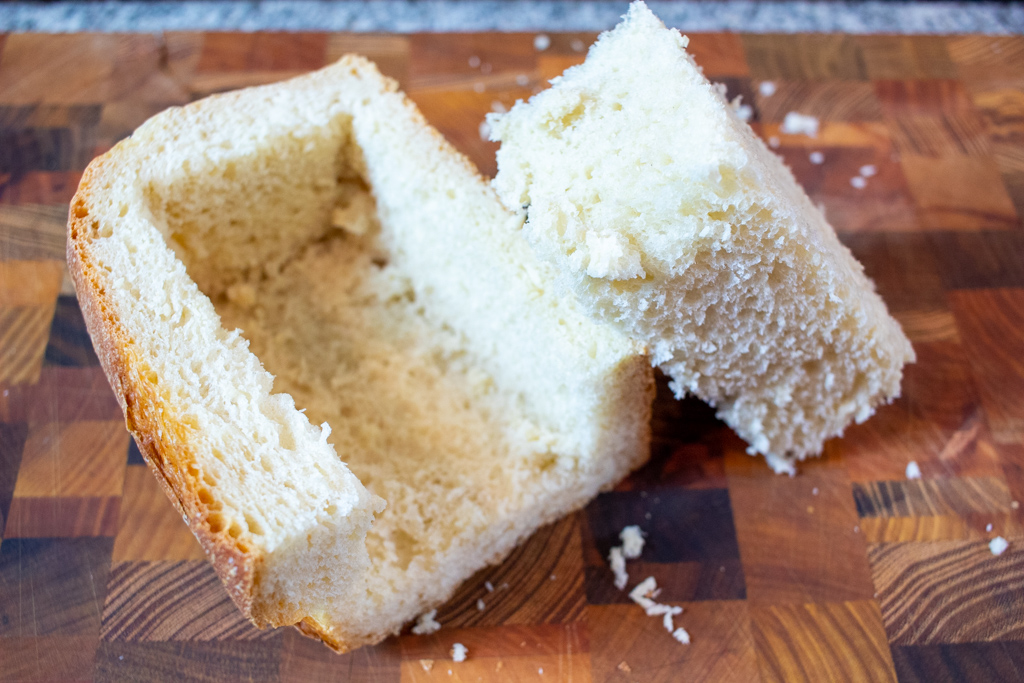
Spatlo or Kota can (and do, usually) contain many fillings. Atchar, the Indian-derived green mango pickle that is a popular condiment in South African cuisine, is almost universally used as it is in a Gatsby. Sauces such as ketchup, barbecue sauce, sweet chili sauce like you’d dip lumpia in or Thousand Island dressing are common options. Polony, a South African emulsion-type sausage similar to bologna, is usually added, as are Russians or Viennas, two different types of cheap sausages (similar to a gas station Polish sausage and a Frankfurter, respectively). bacon (or macon, a mutton-based alternative), hamburger patties, sliced cheese, fried eggs, tomatoes, lettuce… Another variant, containing curry, is called bunny chow–we’ll be exploring that one in a separate post. I read a recipe recently that called for both chakalaka and tomato and onion relish, a near-universal but mostly homemade condiment served with meats at the table, at a braai (a South African tradition of backyard barbecues), or anywhere food is consumed communally. The list of possibilities for a spatlo is as long, or longer, than a hand-written cardboard menu can describe.
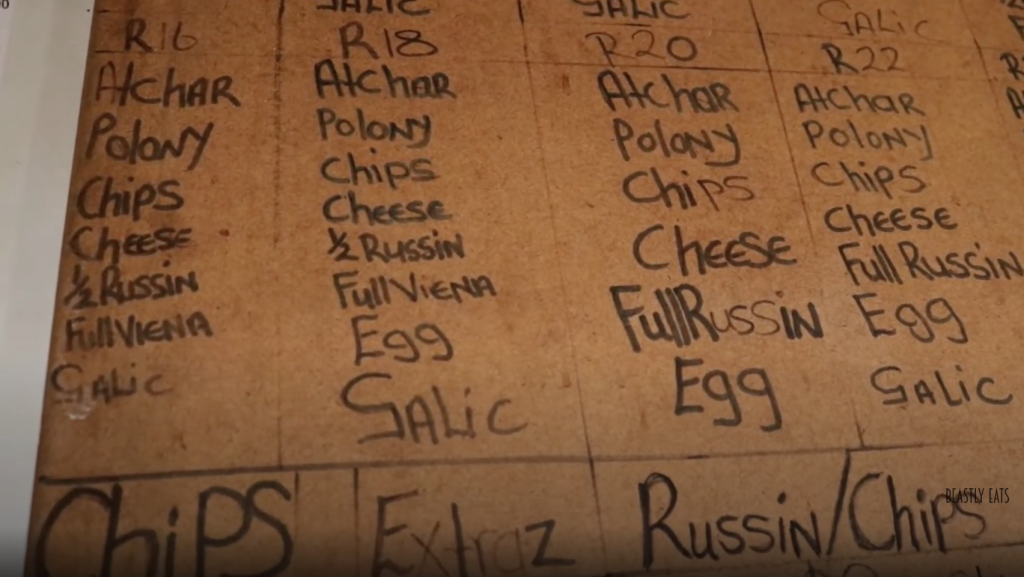
Each one of these is just a whole lot of sandwich, and there are apparently an infinite number of variations. I could spend months eating them and be no closer to a full survey of the sandwich. So I will make one, as representative a version as I can, while including the ingredients that interest me the most.
Chakalaka
Chakalaka is a spicy tomato-and-bean relish popularly served with pap or bread in South Africa. Marinus has been evangelizing it as long as I’ve known him, and I made his recipe on a few occasions before: for picnics or barbecues, to serve with mielie pap, a sort of thick porridge used to scoop up stews, similar to what is called fufu in other parts of Africa but made with corn flour. Marinus has agreed to share his recipe with all of you, and I wholeheartedly recommend it.
Chakalaka
Ingredients
- 2 tins tomatoes
- 1 tin baked beans
- 2 onions sliced finely
- 2 fresh chili chopped finely
- 1 tbsp crushed garlic
- 1 tbsp minced ginger
- 3 teaspoons curry powder
- 1/4 head cabbage or cauliflower shredded
- 2 carrots in a fine julienne or grated
- 2 green sweet peppers cut into short strips
- oil for cooking
- salt to taste
Instructions
- Sweat onions in a saucepan until turning translucent.
- Add garlic, ginger, and chili, and cook briefly till fragrant.
- Add curry powder, stir through, then add the tomato and salt.
- add carrot (and cauliflower if using), cook in the tomato till they start to soften
- add green pepper (and cabbage if using) and cook until beginning to soften
- add the beans, and cook till all the vegetables are cooked.
Notes
If you wanted to get fancy you could toast and grind your own curry masala to use but if your curry powder is fresh enough, the standard blend works very well here. I used a few more chilis than the recipe calls for–a combination of cherry bombs, serrano, and cayenne chilis fresh from my garden–but I think this particular dish can be made a little “extra” when it’s going to be used as a condiment. It’s aromatic from the curry spices, deeply savory from all the tomato yet sweet from the cooked carrots, onions, and peppers. The beans give it enough heft that it could easily carry a meal, but it slots into a supporting role easily enough.
Tomato and Onion Relish
This particular South African condiment was new to me but sounded interesting. I asked and Marinus also had a recipe to share, his adaptation of this award-winning recipe in Afrikaans.
Tomato and Onion Relish
Ingredients
- 5 large and very ripe tomatoes
- 2 mid-sized onions
- 30 ml butter
- 6 cloves garlic
- 4 sprigs rosemary
- 15 ml honey
- Salt to taste
Instructions
- Take the skins off of the tomatoes, then chop into large pieces. Peel onions and dice finely. Peel and crush garlic.
- Add butter, garlic, onions, and tomato to a heavy pot, add salt, and cook slowly over medium heat for around an hour.
- Add the rosemary and cook for another hour.
- Check if the mix has cooked thoroughly and has enough salt. Add honey and cook for another 15 minutes.
I used Mike’s Hot Honey in place of standard honey, giving this relish a little kick. Again, this has a strongly savory character from the tomatoes–romas from my garden mostly, in quantities to make up what they lacked in size–but leads with the piney aroma of rosemary and honey’s sweetness. It’s an unusual but delicious combination and I find myself using it more often than I anticipated, like in this bacon egg & cheese sandwich on focaccia. This recipe didn’t quite fill a 1 pint jar so I will necessarily be making more soon.

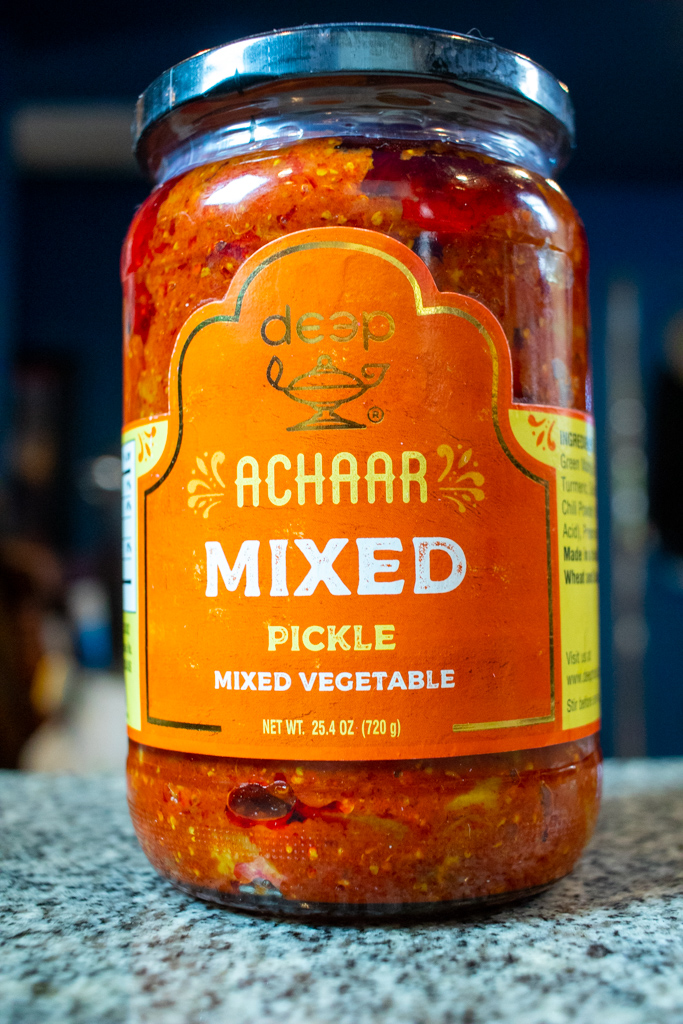
Atchar
Atchar is a pickle made usually of green (unripe) mango, though chili atchars and vegetable atchars also exist. It is quite popular in South Africa, and there are a number of brands available there, one of which I was able to source before writing about the South African sndwich Gatsby several years ago. However, I was unable to get a South African atchar shipped to me in time for this post, so I am using an Indian brand instead. It is much the same thing, salty and spicy and oily and sour, earthy and bitter and nutty, big hits of fenugreek and turmeric, almost medicinal in its aggressive flavor profile.
Atchar is a take-it-or-leave-it condiment, the kind of flavor that does not care whether you like it. South Africans love it, but a little goes a long way.
Polony
Polony is an emulsified, boiled sausage, made from beef or chicken or other meats, cured, often pink-colored, that is cut into slices and served on sandwiches. Yes it is very much the same thing as bologna, though it is often sold unsliced in smaller-diameter chubs that are then sliced ad hoc at home. I’m simply using standard bologna as a substitute.
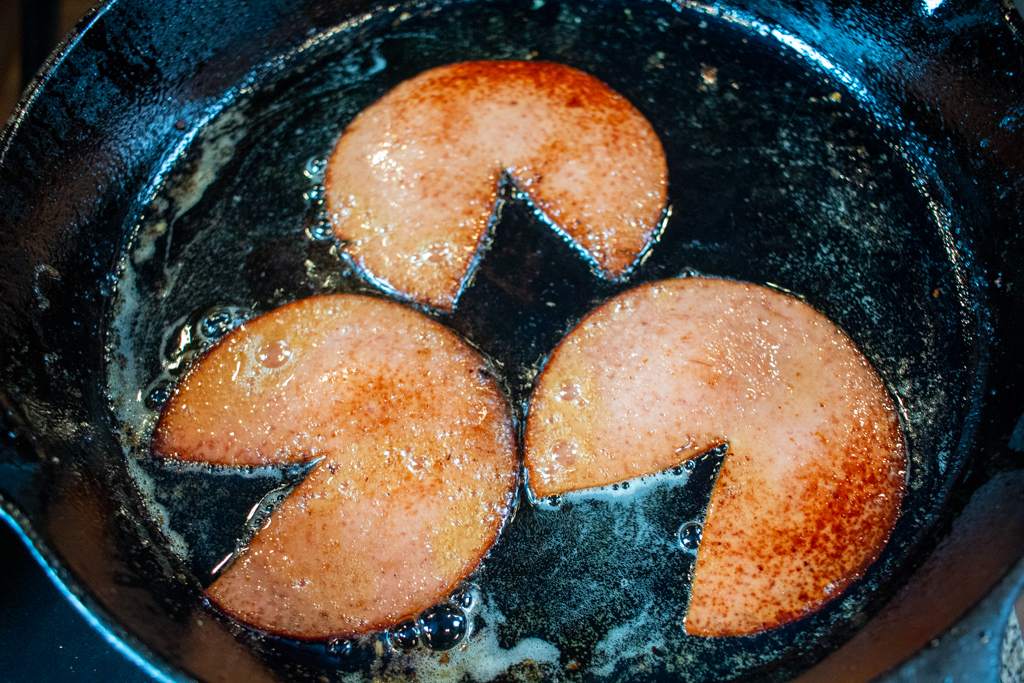
Russians
Russian sausages are a common takeaway item in South Africa, as common as a hot dog here in the US perhaps, and as difficult to define. What kind of sausage is a hot dog? It might be a Frankfurter, or it might be a Wiener, but more often than not it’s simply packaged and sold as a “hot dog” in the US. Russians are similarly ubiquitous and indefinable in South Africa. I asked Marinus to describe them:
Russians are a bit like frankfurters, but larger (a foot-long Russian and chips is a staple at deep fried food places). Heavily spiced beef and pork sausage, nothing fancy, same kind of spices as a Vienna or Frankfurter (and the same kind of artificial colour…), a bit thicker than your thumb, as long as a Frankfurter or longer. Almost always fried, either pan fried or deep fried.
Between Marinus’ description and a few others I read online, I decided that a cheap Polish sausage would be a good substitute–not a full-sized kielbasa, but the kind of Polish you might find on the rollers at a gas station.
Slap Chips
Not every description of the sandwich references slap chips–some of them simply talk about chips. Yet this is something I got wrong in my Gatsby writeup and I wanted to take another crack at them. Slap chips are slabs of russet potato, sliced thick and fried brown and crisp like any other British-style chip. They are then seasoned with salt and vinegar and sealed briefly in an airtight container while still hot, steaming them slightly. Some surface crispness may remain but the texture, overall, is limp–a direct translation of the Afrikaans word “slap.”
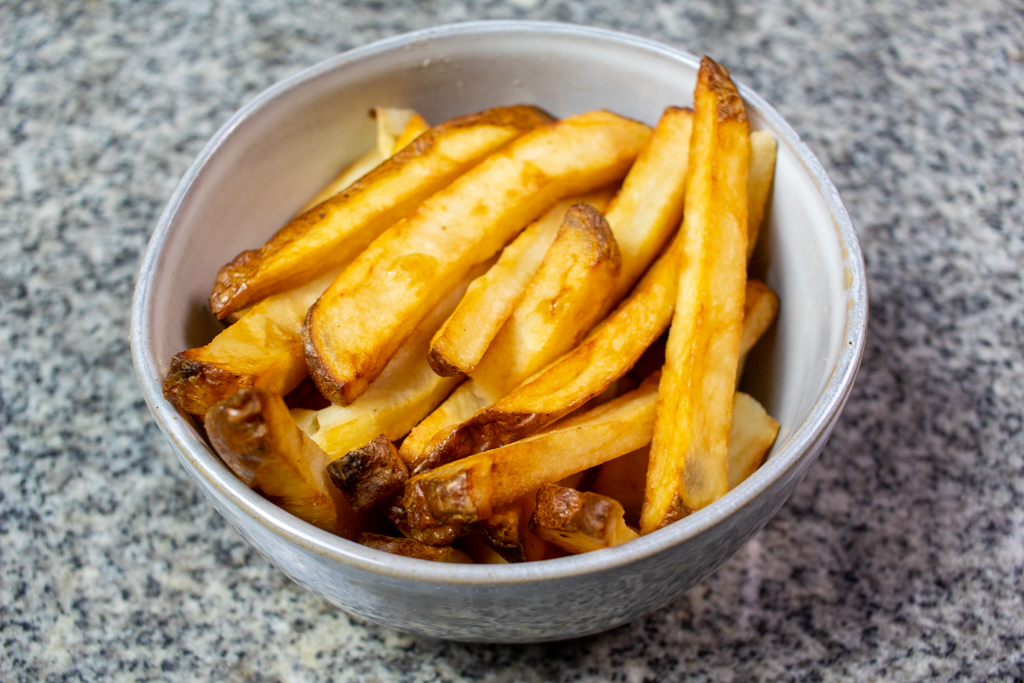
Other ingredients
In addition to fried bologna, atchar, tomato onion relish, Polish sausage, chakalaka, and slap chips, I’ll be layering in white Cheddar cheese, bacon, a fried egg, ketchup, and a South African-style barbecue sauce called Southern Braai to round out the sandwich.




The Sandwich
I start by toasting the quarter loaf. Some descriptions I’ve seen do this and some don’t but in general I am in favor of toasted bread and will lean in that direction

The smaller-diameter polony sausage would probably fit into this cavity better than normal-sized American bologna does, but I folded it over and it worked.
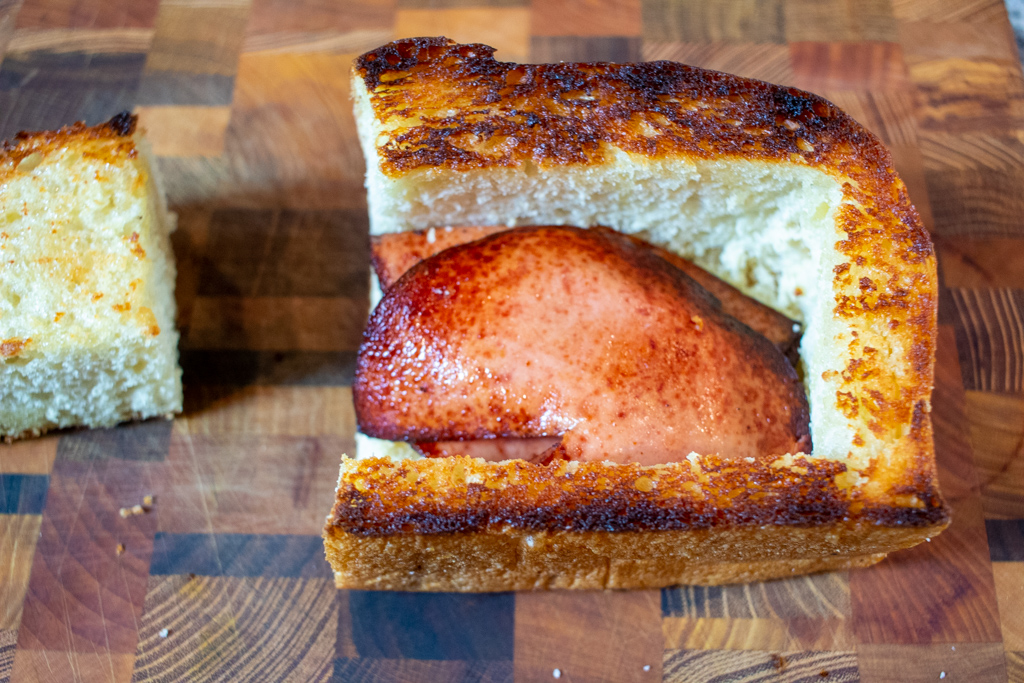
Atop the bologna: atchar, then cheese, then bacon. I spread the tomato onion relish atop the bacon because of the natural synergy that bacon and tomato share, then split the Polish sausage before adding it. I spread a thick layer of chakalaka on top of that before remembering that I should probably be taking more photos.
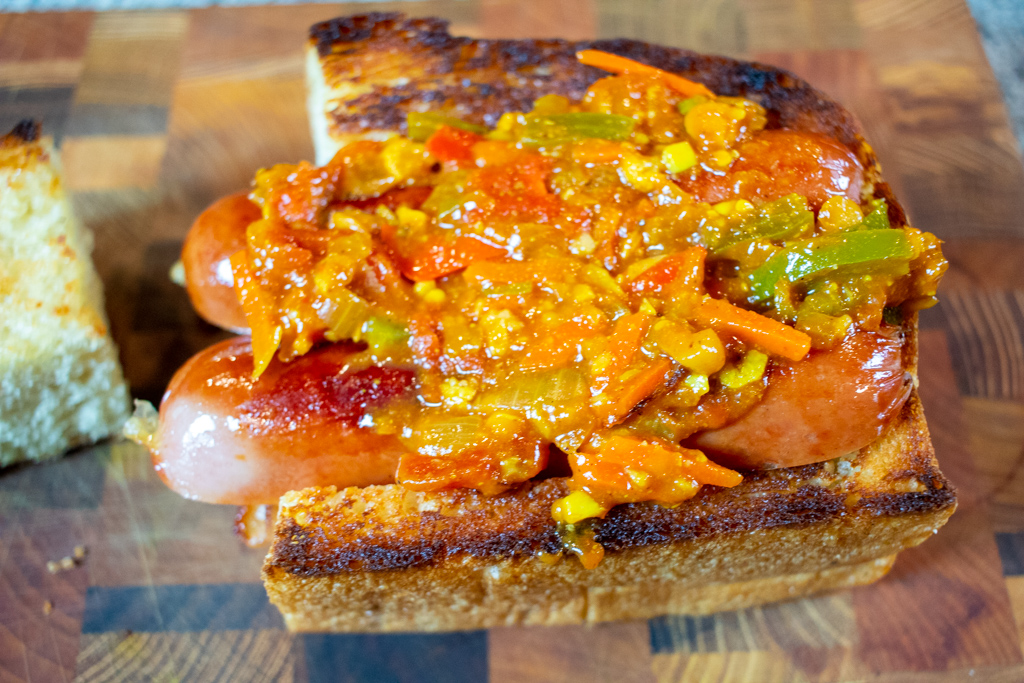
Still, you can almost make out those layers looking at it end-on.
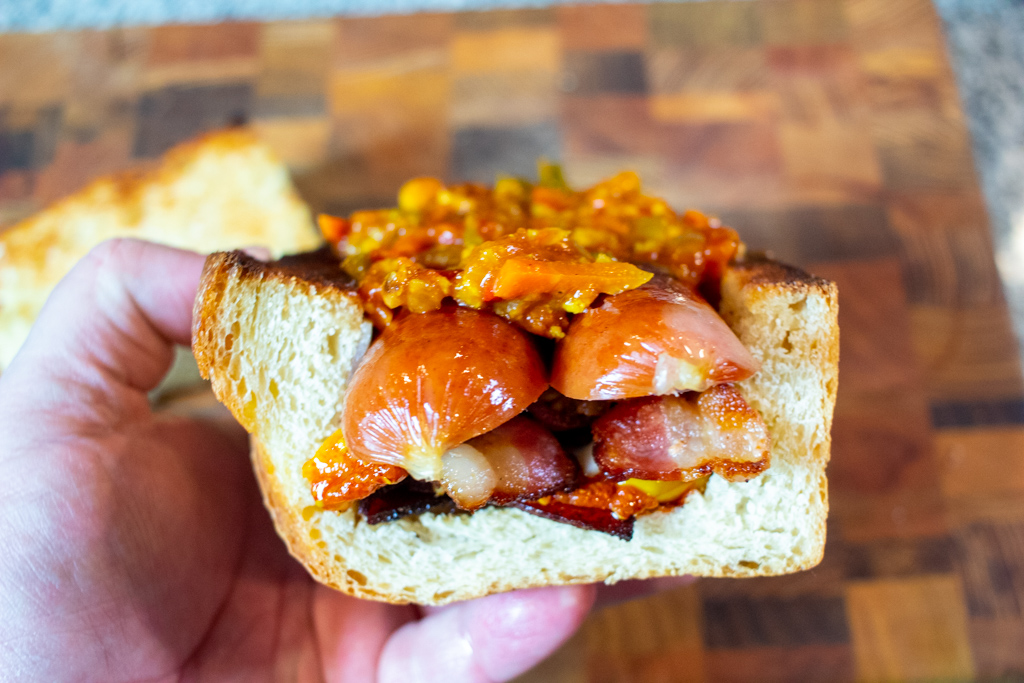
Many of the homemade spatlos I’ve seen put the chips somewhere in the middle, and leave that fried egg to be the crowning ingredient. The street food versions I’ve seen though leave the chips on top, letting the customer add ketchup, barbecue sauce, or whatever they might like to dress their chips with. I opted for the latter arrangement.

I did catch a little of that yolky money shot through that layer of potatoes though.
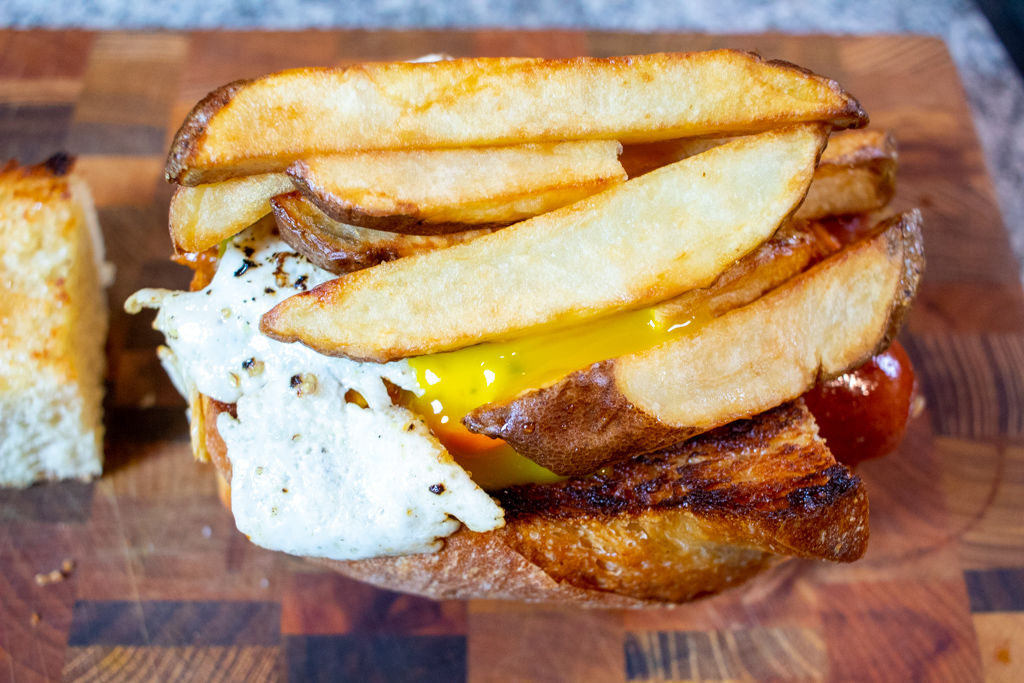
To finish, I used ketchup and the Southern Braai brand barbecue sauce I’d bought. Barbecue sauces can vary widely from place to place in the US, and what someone from another country thinks of as barbecue sauce is unlikely to be recognizable to me, so I like to sample them when I can. This sauce has some flavors in common with American BBQ sauces–a little tomato, cider vinegar, slight presence of molasses sweetness and warming spices. But with the fermented chili peppers and the way it leans more into the sour vinegar flavors it also resembles a very mild hot sauce. It’s not bad, and I’d rather eat fries with just about anything than ketchup, so this will do.
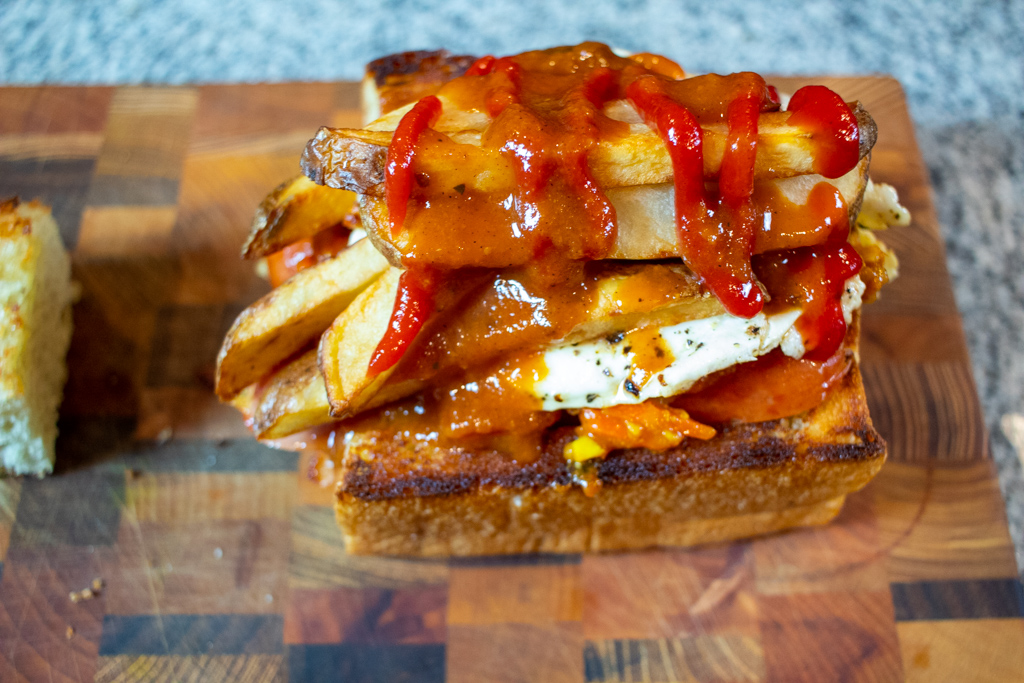
Insufficient as it may be to help restrain a pile of sandwich fillings such as this, the rectangular slice of crumb that was removed earlier gets placed atop the Spatlo to finish it, though a street food purveyor might instead lean it at a jaunty angle for maximum instagrammability.

Experience spatlo eaters wrap them tightly in plastic, peeling back a bit at a time to minimize the loss of its precious bits and the resulting mess. I ate it more simply, over a plate, plenty of napkins at hand. It is not really a sandwich that lends itself to finding a harmonious whole–the person who can bite through all the layers has a much larger mouth than I. Instead, each bite is a surprise–here a hunk of sausage with chakalaka, egg yolk, slap chips and barbecue sauce, there a mouth full of atchar with bacon, bologna, cheddar, tomato relish. It’s too much to take in all at once, but there’s a lot to appreciate when focusing on the small details.

I like sandwiches.
I like a lot of other things too but sandwiches are pretty great


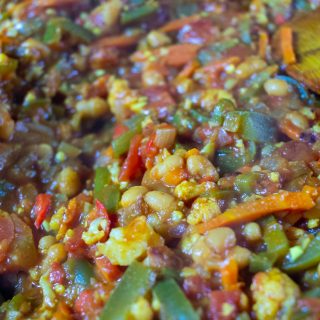
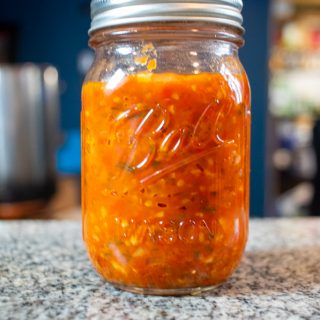

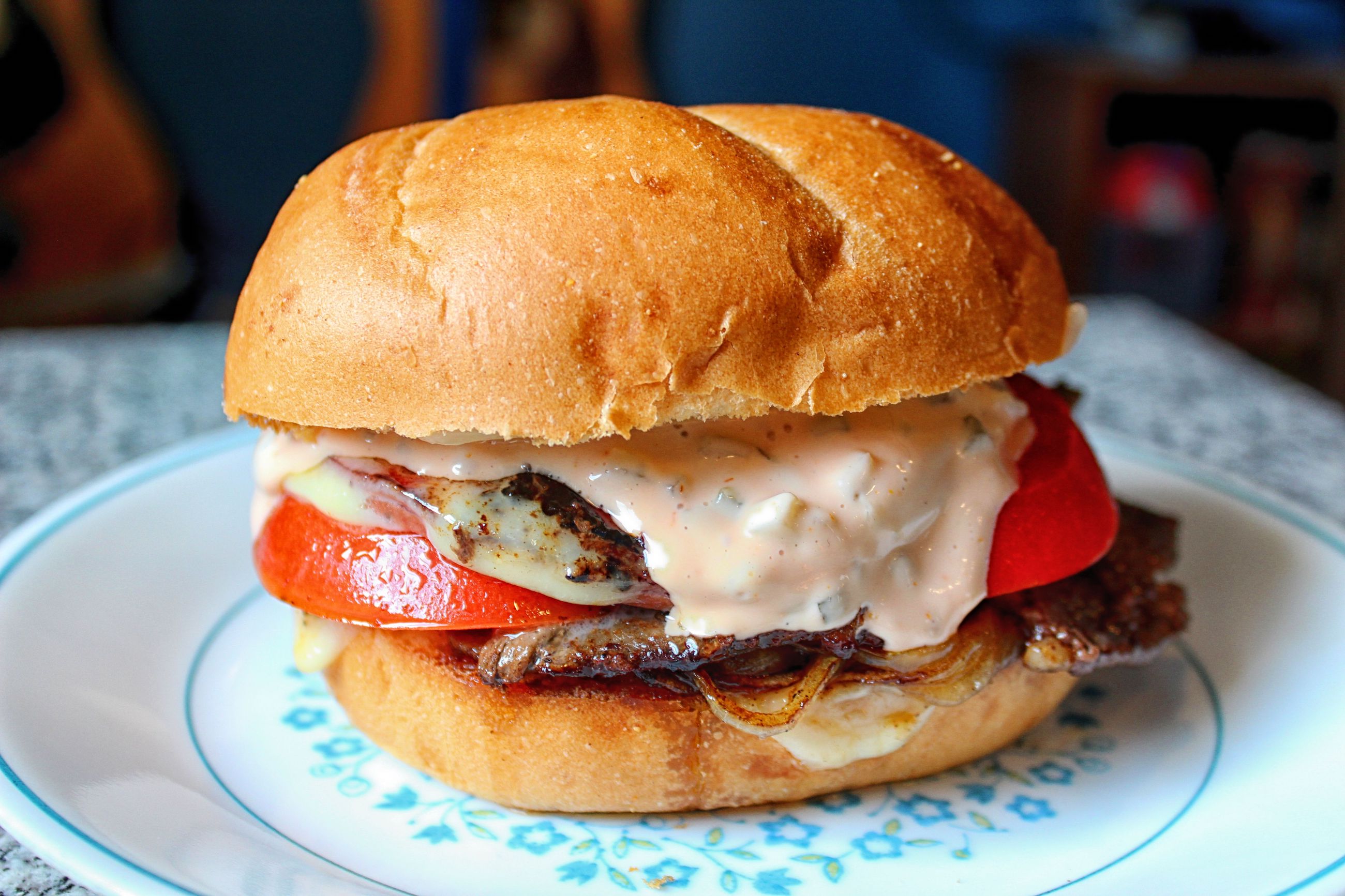







Thank you for another amazing post! I’ve enjoyed your blog for years and greatly admire your research and writing. Yours is a labor of love.